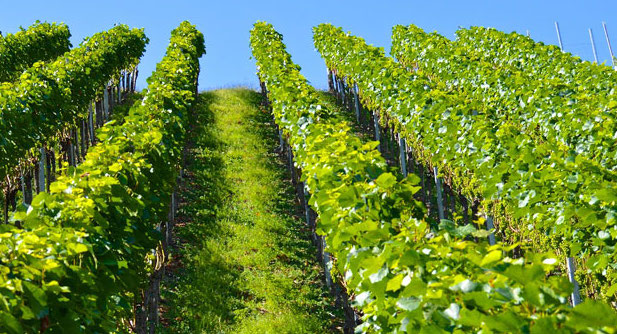Farmers in parts of the western United States who rely on snowmelt to help irrigate their crops will be among the hardest hit in the world by climate change, a new study reveals.
In an article published today in Nature Climate Change, an interdisciplinary team of researchers analyzed monthly irrigation water demand together with snowmelt runoff across global basins from 1985 to 2015. The goal was to determine where irrigated agriculture has depended on snowmelt runoff in the past and how that might change with a warming climate.
They then projected changes in snowmelt and rainfall runoff if the Earth warms by 2 or 4 degrees Celsius (about 3 ½ or 7 degrees Fahrenheit), which will potentially put snow-dependent basins at risk.
The findings pinpointed basins globally most at risk of not having enough water available at the right times for irrigation because of changes in snowmelt patterns. Two of those high-risk areas are the San Joaquin and Colorado river basins in the western United States.
“In many areas of the world, agriculture depends on snowmelt runoff happening at certain times and at certain magnitudes,” said Yue Qin, assistant professor of geography and a core faculty of the Sustainability Institute at The Ohio State University.
“But climate change is going to cause less snow and early melting in some basins, which could have profound effects on food production.”
Qin, lead author of the study, designed the research with Nathaniel Mueller, assistant professor at Colorado State University, and Steven Davis, associate professor at the University of California, Irvine.
Under the 4-degree Celsius warming scenario, the researchers project that the share of irrigation water demand met by snowmelt in the San Joaquin Basin decreases from 33 percent to 18 percent. In the Colorado Basin, the share of water demand met by snowmelt decreases from 38 percent to 23 percent.
Other basins in which agriculture is at particular risk because of changes in snowmelt are located in southern Europe, western China and Central Asia.
Depending on both the magnitude and the timing, rainfall runoff may be able to compensate for declines in snowmelt runoff in meeting irrigation water demand — but only for some basins, the researchers calculated.
“In many basins, future changes in rainfall do not compensate for the lost snowmelt in crops’ growing seasons,” Mueller said.
The San Joaquin, for example, is one basin where increases in rainfall runoff won’t be able to make up for snowmelt decline when irrigation is most needed.
The researchers evaluated the potential availability of reservoir storage and groundwater to help satisfy the additional irrigation need created by less snowmelt and early melting. In some basins, those additional requirements would pose great challenges in trying to make up for changing snowmelt patterns.
“Irrigation demands not met by rainfall or snowmelt currently already represent more than 40 percent of reservoir water storage in many Asian and North American basins,” Davis said.
“And in a warming world, agriculture won’t be the only added demand on reservoirs and other alternative water supplies like groundwater.”
In the San Joaquin Basin, findings suggested that 14 percent of irrigation water demand must be met by new alternative sources under a 4-degree Celsius warming scenario. In the Colorado Basin, the figure would be 9 percent.
The study also examined which crops globally were at most at risk because of snowmelt changes resulting from climate change. Findings showed that rice and cotton in northern hemisphere summer, or wheat and managed grassland in spring, were particularly snow-dependent.
For the study, researchers used data on monthly rainfall and snowmelt runoff globally from 1985 to 2015 from a dataset called TerraClimate. They then calculated monthly irrigation water consumption for a variety of crops.
Comparing historical runoff and total surface water consumption, they estimated monthly snowmelt and rainfall runoff consumption as well as demand for alternative water sources in each major river basin.
They then used climate models to project snowmelt and rainfall runoff in each basin if global mean temperatures rise 2 degrees or 4 degrees Celsius above pre-industrial conditions.
Qin said the results of the study could be used to prioritize and inform methods to minimize the impact of changing snowmelt on water supplies for agriculture. In some cases, policymakers may have to consider extra groundwater pumping and reservoir development.
Limits may also need to be placed on water demand, such as by increasing crop water productivity, Qin noted.
“We need to find ways to help those basins that will most need to adapt to the coming changes,” she said.
The study was supported by the Foundation for Food and Agriculture Research, the U.S. National Science Foundation and the German Federal Ministry of Education and Research.
Other co-authors on the study were from University of California, Irvine; University of California, Merced; University of Idaho; University of Göttingen; Dartmouth College; and Columbia University.















